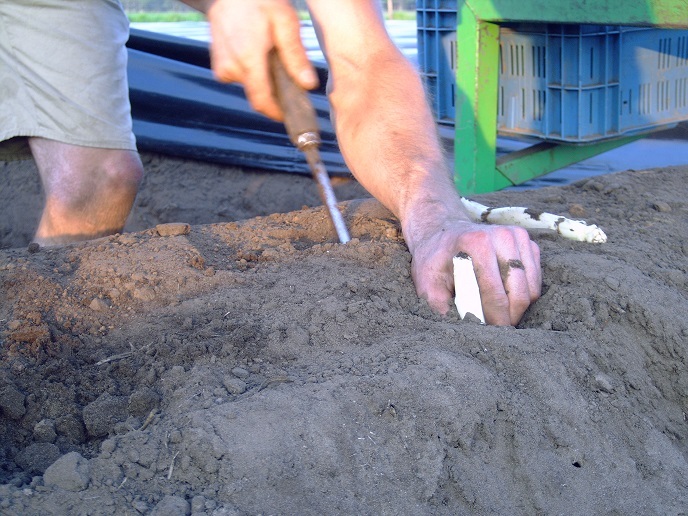New mechanical harvester successfully picks white asparagus
White asparagus is a delicacy variety, larger and sweeter than the familiar green kind. The flavour results from a lack of chlorophyll (plants’ green pigment), due to the stalks being grown underground. If stalks break the surface, they start to develop chlorophyll and bend towards the light. If so, they are rejected as second rate and sold for 50 to 70 % less. The underground growth habit poses several harvesting problems. Firstly, white asparagus is harvested selectively, meaning that only a portion of the crop is taken, and the plant continues growing for further harvesting later. This creates difficulty for pickers, who cannot see the plant underground and may therefore damage it during harvesting. Such damage can reduce yields by 30 %. Secondly, harvesting white asparagus is physically hard and unappealing work. This creates a problem with labourer availability. During 2020 alone, approximately 19 % of the German crop, the largest in Europe, could not be harvested due to lack of personnel.
A new harvesting machine
The EU-funded SPARTerS project developed a new mechanical harvester. Researchers advanced a prototype, previously not ready for production, to a market-ready system. The team also developed the necessary operating software and tested the complete system. “Our most unique solution is subsurface detection,” explains project coordinator Thérèse van Vinken. “Previous attempts have used camera techniques, which tried to copy human eyes for detection. But the human eye cannot detect subsurface.” Instead, using a patented technology, the harvester introduces a weak electrical signal to the soil, which makes salt water in the plants’ tissues visible to the harvester’s sensors. Sensors are mounted at several depths on stalks that are dragged through the soil as the harvester moves forward. When the sensors detect an asparagus stalk, they quickly withdraw to enable cutting. A robot arm cuts the stalks underground to better than 5 mm precision. This results in less disturbance of the plant and reduced crop loss. Other machinery collects and bundles the cut stalks.
Ready for market
Researchers optimised the detection and cutting modules of the prototype, while also integrating the whole system. This took the device from technology readiness level (TRL) 7 to TRL 8. After the 2019 season, the team converted the machine to a single-row self-propelling version. Testing during 2020 confirmed that the machine works. The quality target started at 70 % and was 80 % at the end of season. Yield was about 80 % of expectations. This brought the device to TRL 9. “We managed to develop and build the world’s first selective harvesting machine that is actually ready for commercial selling,” adds van Vinken. By November 2020, the team had sold three units to be delivered during early 2021. For the 2021 season, the team will build six more. Within 5 years, the company expects to be producing 150 machines per year. Without the mechanical harvester, the white asparagus market would have become extinct. Now, the industry can expect to thrive, with an improved yield and lowered costs.
Keywords
SPARTerS, selective harvesting robot, white asparagus, mechanical harvester, subsurface detection



